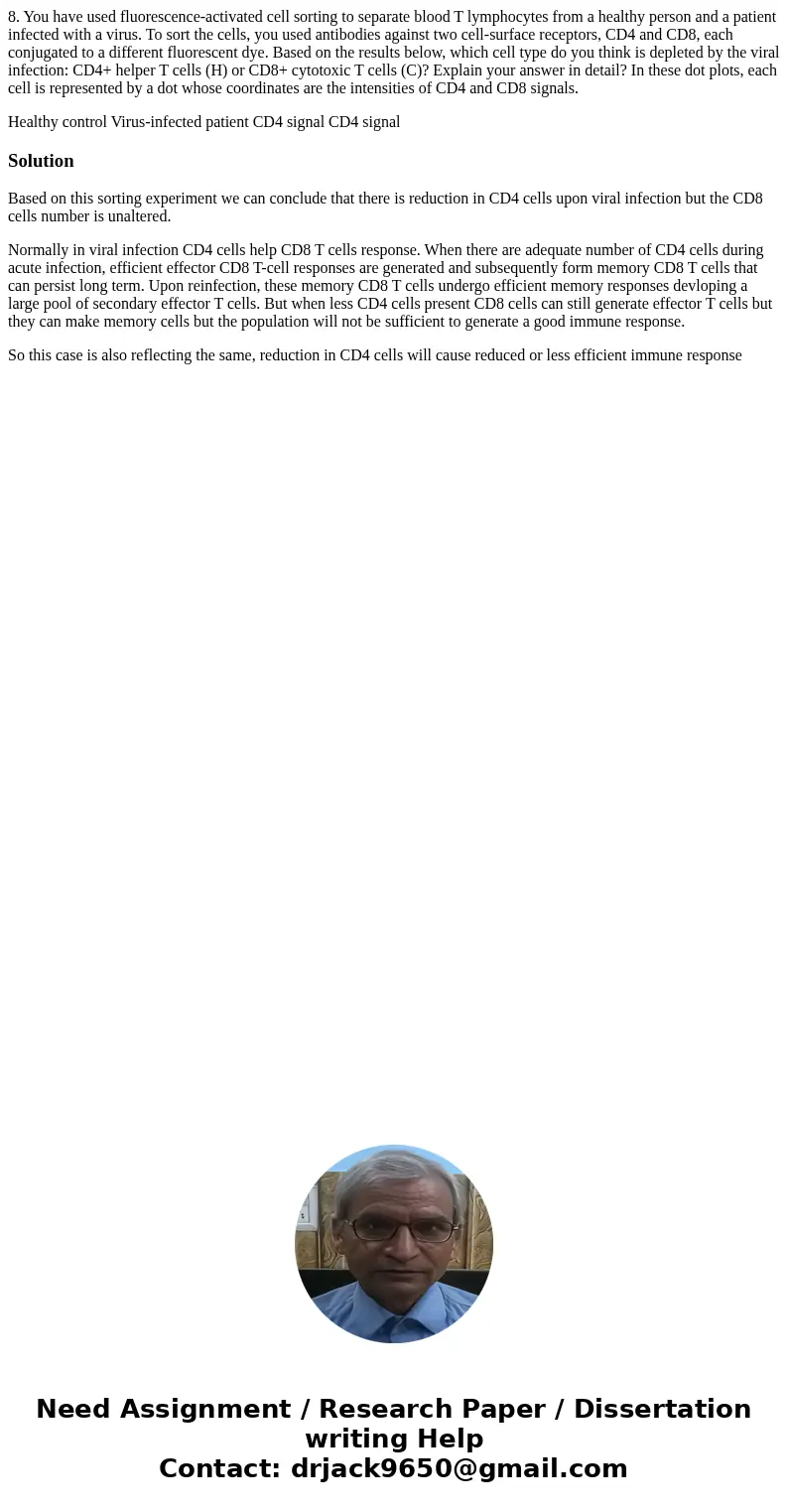8 You have used fluorescenceactivated cell sorting to separa
8. You have used fluorescence-activated cell sorting to separate blood T lymphocytes from a healthy person and a patient infected with a virus. To sort the cells, you used antibodies against two cell-surface receptors, CD4 and CD8, each conjugated to a different fluorescent dye. Based on the results below, which cell type do you think is depleted by the viral infection: CD4+ helper T cells (H) or CD8+ cytotoxic T cells (C)? Explain your answer in detail? In these dot plots, each cell is represented by a dot whose coordinates are the intensities of CD4 and CD8 signals.
Healthy control Virus-infected patient CD4 signal CD4 signalSolution
Based on this sorting experiment we can conclude that there is reduction in CD4 cells upon viral infection but the CD8 cells number is unaltered.
Normally in viral infection CD4 cells help CD8 T cells response. When there are adequate number of CD4 cells during acute infection, efficient effector CD8 T-cell responses are generated and subsequently form memory CD8 T cells that can persist long term. Upon reinfection, these memory CD8 T cells undergo efficient memory responses devloping a large pool of secondary effector T cells. But when less CD4 cells present CD8 cells can still generate effector T cells but they can make memory cells but the population will not be sufficient to generate a good immune response.
So this case is also reflecting the same, reduction in CD4 cells will cause reduced or less efficient immune response

 Homework Sourse
Homework Sourse